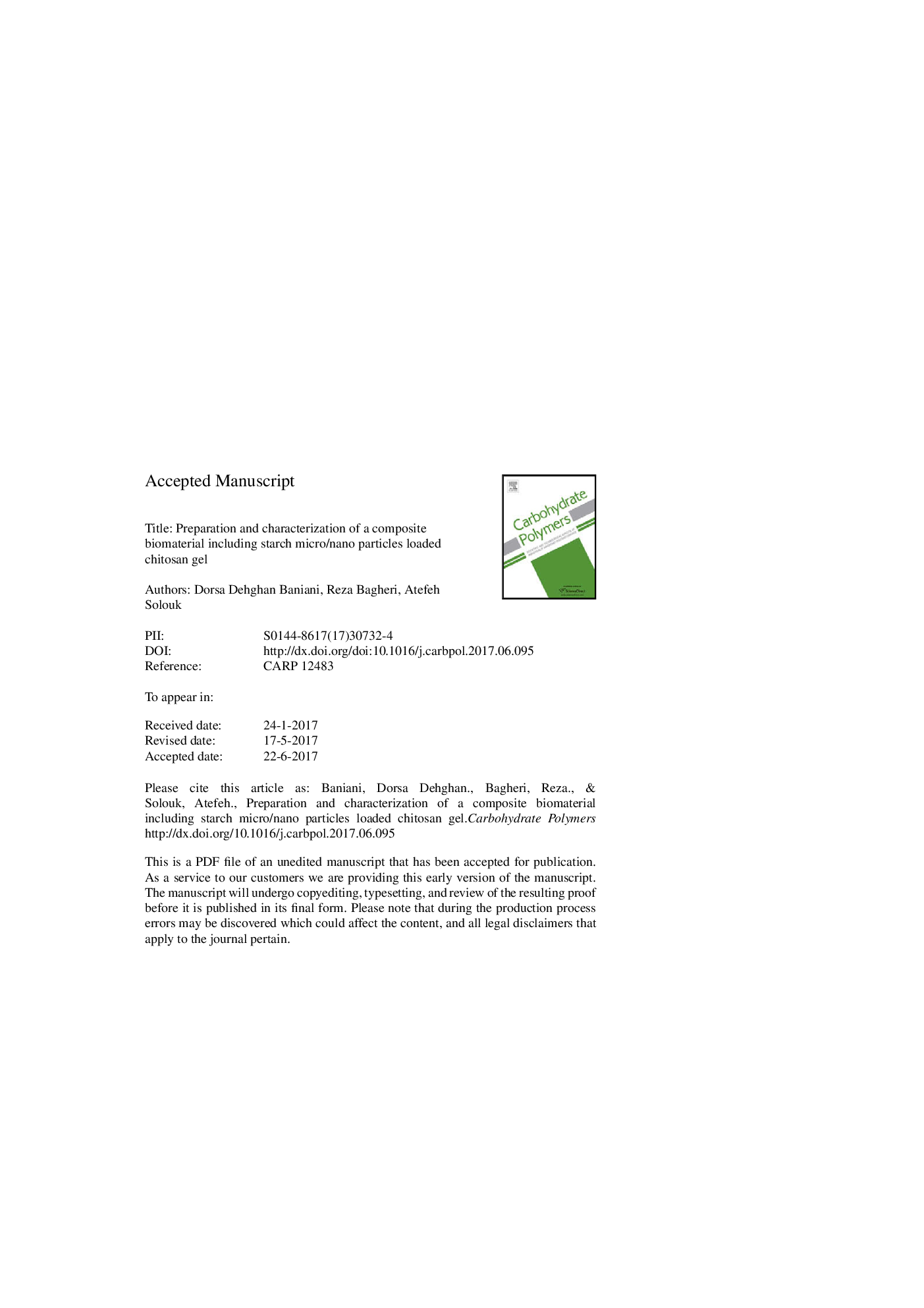| Article ID | Journal | Published Year | Pages | File Type |
|---|---|---|---|---|
| 5156850 | Carbohydrate Polymers | 2017 | 28 Pages |
Abstract
Thermosensitive Chitosan hydrogels which can be injected into defects with minimally invasive approach were prepared. Also starch micro/nano particles were synthesized via water-in-oil (W/O) miniemulsion technique. The starch particles were incorporated into the chitosan hydrogel to prepare injectable thermosensitive hydrogel composites. Tube inverting method, compression tests, swelling studies, XRD, SEM, OM, DLS, UV-vis spectroscopy were used for investigations. Results revealed that increasing crosslinker and surfactant contents and stirring rate leads to particle size reduction. Particle size was modeled using design of experiments (DOE) via the response surface method (RSM). Due to analysis of variance (ANOVA), the particle sizes can be predicted by quadratic model within the design space. Gelation time and compressive modulus measurements showed the particles significant influence on the blend network density and hydrogel mechanical properties. Swelling measurements revealed that incorporation of starch particles in chitosan hydrogel increases its swelling coefficient significantly. The innovative architecture, namely micro/nano particles in gel can be considered as a dual delivery platform or smart scaffold for engineering of certain tissues.
Keywords
Tween 80 (PubChem CID: 5281955)Methylene blue (PubChem CID: 6099)Starch (PubChem CID: 439341)Acetone (PubChem CID: 180)Acetic acid (PubChem CID: 176)Hydrogel compositesSurface response methodDesign of Experiments (DOE)Compressive modulusStarchSodium hydroxide (PubChem CID: 14798)Sodium chloride (PubChem CID: 5234)Chitosan (PubChem CID: 71853)
Related Topics
Physical Sciences and Engineering
Chemistry
Organic Chemistry
Authors
Dorsa Dehghan Baniani, Reza Bagheri, Atefeh Solouk,
